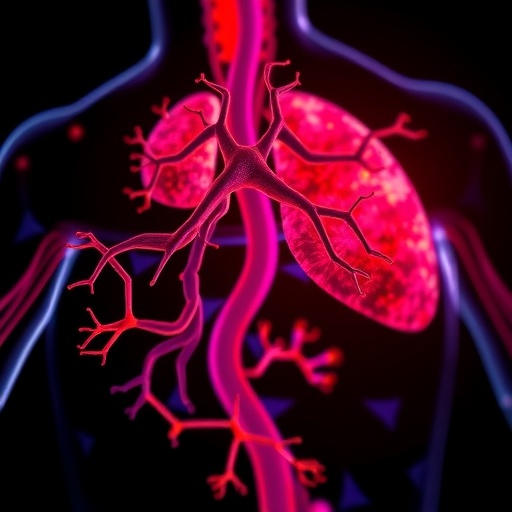In a groundbreaking review published recently in Current Molecular Pharmacology, researchers have unveiled the sophisticated molecular architecture governing TCF/LEF-mediated transcription within the canonical Wnt signaling pathway, shedding light on new therapeutic opportunities against cancer and fibrotic diseases. This comprehensive analysis elucidates how the four mammalian paralogs—TCF7, LEF1, TCF7L1, and TCF7L2—achieve their remarkable functional specificity, employing a modular domain structure coupled with dynamic alternative splicing events.
Central to the canonical Wnt pathway, TCF/LEF proteins act as the ultimate transcriptional effectors, translating the influx of β-catenin signals into discrete gene expression programs. According to co-author Yusuke Higuchi from the Beckman Research Institute, these proteins do not simply serve as passive endpoints but engage in a highly regulated interplay with diverse co-repressors, chromatin remodelers, and layers of post-translational modifications, a complexity that science is only beginning to decode with precision.
The review underscores an intriguing facet of Wnt transcriptional regulation: the Wnt enhanceosome is pre-assembled in a poised state even before signal activation. This arrangement ensures that upon β-catenin’s translocation into the nucleus, the transcriptional machinery can swiftly respond, enabling rapid gene expression changes pivotal for cellular fate decisions. Such molecular pre-organization challenges previous models that viewed enhanceosome assembly as purely signal-induced.
A significant regulatory axis detailed in the analysis involves the ubiquitin-proteasome system, particularly the clearance of the Groucho/TLE co-repressor through UBR5-mediated ubiquitination. This event is crucial for dislodging repression and allowing β-catenin to interact with TCF/LEF factors effectively. Furthermore, the study highlights the phenomenon of context-dependent switching between TCF isoforms, where alternative splicing modulates transcriptional output to fine-tune cellular responses in diverse tissues and pathological states.
Phosphorylation of TCF/LEF proteins by kinases such as TNIK (TRAF2 and NCK-interacting kinase) and HIPK2 (homeodomain-interacting protein kinase 2) emerges as another vital layer of control, dynamically influencing DNA binding affinity and co-factor interactions. These post-translational modifications offer a mechanistic basis for the adaptability and selectivity of Wnt target gene regulation, underpinning the pathway’s roles in development and disease.
Perhaps most notably, the review documents the translational leap from molecular insights to clinical applications. The TNIK inhibitor INS018_055, a product of cutting-edge artificial intelligence-driven drug discovery, has successfully passed Phase II clinical trials for idiopathic pulmonary fibrosis (IPF). This drug demonstrated a statistically significant attenuation of lung function decline over 52 weeks, marking a pivotal validation of targeting downstream Wnt pathway kinases rather than upstream components, which traditionally carry higher toxicity risks.
This clinical milestone represents the first robust instance where modulation of TCF/LEF regulatory kinases has been shown to safely and effectively recalibrate Wnt signaling in human patients. Higuchi accentuates that this approach may overcome longstanding hurdles in targeting Wnt-driven pathologies by circumventing the toxicity commonly associated with broad Wnt inhibitors that disrupt the pathway at more proximal points.
Despite these advances, the review candidly acknowledges the challenges inherent to directly targeting TCF/LEF proteins themselves. Their intrinsically disordered β-catenin binding domains render conventional small-molecule binding approaches ineffective, prompting exploration into next-generation modalities such as PROTACs (proteolysis targeting chimeras) and AI-designed protein scaffolds capable of precise interaction with these elusive regions.
The authors emphasize that selective modulation of TCF/LEF activities opens a promising therapeutic window for a spectrum of diseases including cancer, fibrosis, and metabolic disorders, potentially offering benefits without the deleterious side effects that have hampered prior Wnt pathway targeting efforts. This nuanced control ensures that Wnt signaling can be fine-tuned rather than globally inhibited, preserving essential physiological functions.
Moreover, the review delves into the structural complexity imparted by alternative splicing of TCF/LEF transcripts. Such splicing generates isoforms with differential domain compositions—altering DNA-binding properties, co-regulator recruitment, and transcriptional potency—thus enabling context-specific transcriptional landscapes that align with cellular identity and environmental cues.
The interplay between TCF/LEF proteins and chromatin remodeling complexes further enriches the regulatory network, influencing Wnt target accessibility and epigenetic states. This dynamic chromatin context orchestrates a multifaceted transcriptional environment wherein signal integration occurs, reinforcing the pathway’s adaptability.
Finally, the researchers speculate on the future perspectives enabled by advances in synthetic biology and computational protein design. These technologies could revolutionize the ability to engineer bespoke modulators of TCF/LEF function with unparalleled specificity, potentially heralding a new era of personalized molecular therapies tailored to the intricate regulation of the canonical Wnt pathway.
In summary, this landmark review not only clarifies the molecular intricacies of TCF/LEF-driven transcriptional control within the canonical Wnt pathway but also propels the field toward innovative therapeutic strategies. Harnessing such detailed mechanistic insights promises to transform treatment paradigms for a range of Wnt-associated diseases, delivering precision interventions that reconcile efficacy with safety.
Subject of Research: Molecular mechanisms of TCF/LEF-mediated transcription in the canonical Wnt signaling pathway.
Article Title: (Not explicitly provided in the content)
News Publication Date: (Not explicitly provided in the content)
Web References: http://dx.doi.org/10.1016/j.cmp.2025.09.004
Image Credits: The authors.
Keywords: Drug discovery, Wnt signaling, TCF/LEF transcription factors, cancer, fibrosis, TNIK inhibitors, idiopathic pulmonary fibrosis, transcriptional regulation, co-repressors, chromatin remodeling, post-translational modifications, alternative splicing.
Tags: alternative splicing in transcription factorsCancer Treatment Strategiesco-repressors and chromatin remodelersenhanceosome pre-assembly in Wnt signalingfibrosis therapy advancementsgene expression programs in cellular fate decisionsmodular domain structure of TCF proteinsTCF/LEF transcription factorstherapeutic targets in molecular pharmacologytranscriptional regulation in diseasesWnt signaling pathwayβ-catenin signaling mechanism





